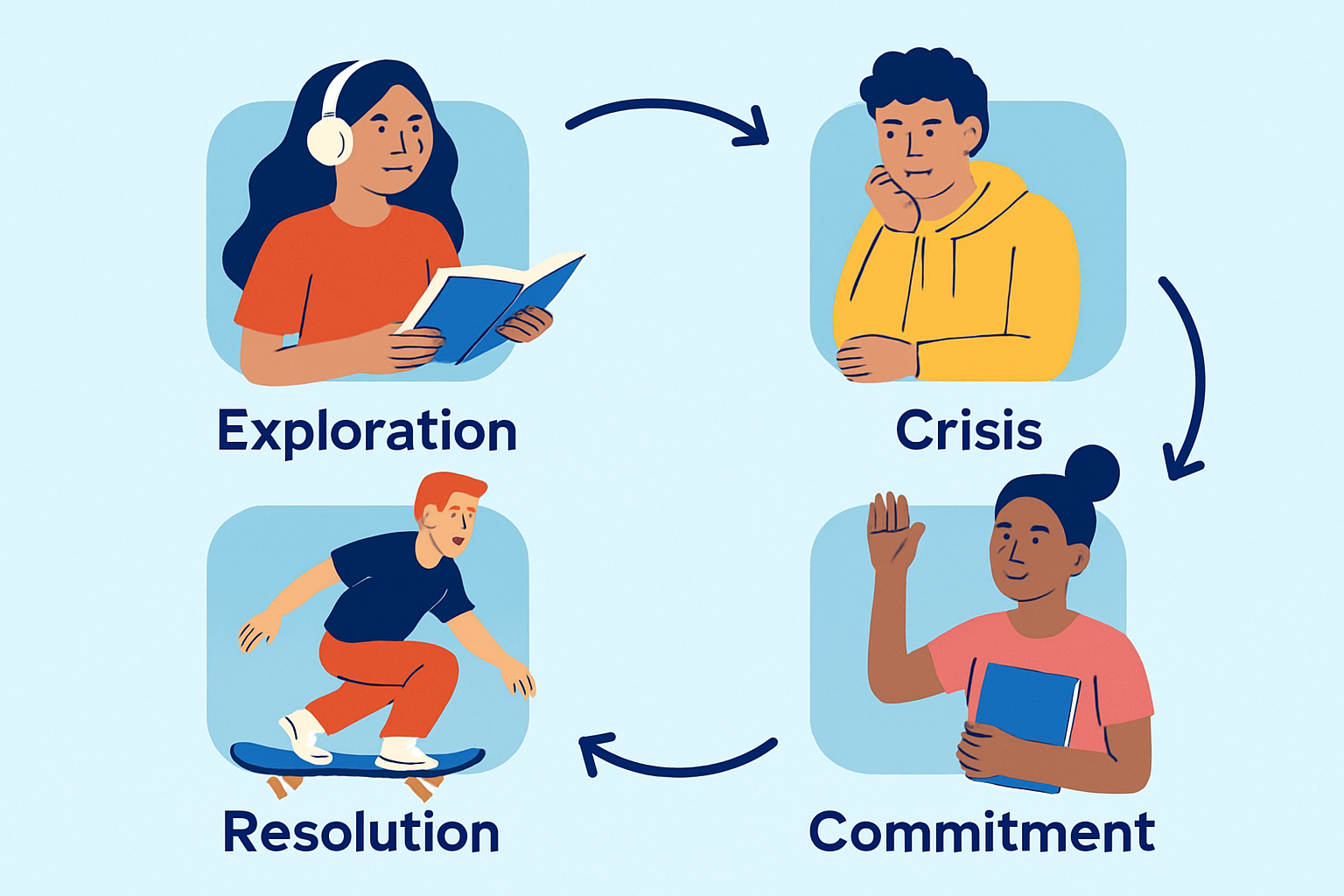
Building Mental Toughness for Young Athletes Under Pressure
Learn advanced tips and expert techniques to help young athletes build mental toughness, stay focuse...
Adolescence is about way more than just those obvious physical changes. It's a key psychological phase of identity development in adolescence where young people begin to dig into who they really are and start piecing together their own identity.
Identity development during adolescence is about how young people start to figure out who they really are—what they value and believe and how they see their place in the world. This journey is key for helping teens build confidence, make decisions that stick and handle the often tricky world of social interactions.
Many people often get the wrong idea thinking that who we are is pretty much locked in during childhood or that identity hits the pause button once adolescence wraps up. Identity is more like a river—always flowing and reshaping itself throughout our lives.
Identity development plays a huge role in how adolescents see themselves and connect with the world. When teens have a clear sense of who they are it usually boosts their self-esteem. This helps them make smarter choices and build meaningful friendships. Beyond that it’s important for mental health, providing a steady sense of purpose and belonging that keeps them grounded.
Adolescence is a pivotal time when young people tentatively test out different directions, trying on various hats as they slowly figure out the adults they’re meant to become. This whole journey is gently steered by the unfolding development of their identity, which, if you ask me, is as much about discovering who they are as it is about letting go of who they once were.
Psychologists have developed several key theories to explain how identity develops. It’s a tangled web. Erik Erikson focused on adolescence as a critical period framed by what he called 'identity versus role confusion'—basically the tough balancing act young people go through to figure out who they are. Building on Erikson’s work, James Marcia introduced the idea of identity statuses that map whether teens explore different paths or settle into particular roles.
Identity development hardly ever travels a straight path but usually unfolds in four main stages that most adolescents navigate: exploration, crisis, commitment and resolution.
Alright, here’s where the adventure begins! This initial phase might feel a bit like standing at the edge of a diving board—both nerve-wracking and exciting. The key is to take that first step with confidence, even if you’re just dipping your toes in. Trust me, every pro was once a beginner, and this is exactly where you plant your flag.
Exploration kicks in when teenagers begin testing the waters by joining clubs or diving into new hobbies. They may also take a second look at their family and cultural beliefs.
The crisis stage often stirs up a whirlwind of confusion and anxiety as teens try different paths. They might bite their nails over whether their choices will fly with family or friends or if those decisions truly capture who they are deep down.
During the commitment stage adolescents begin to lock in on specific values, beliefs or goals usually after carefully considering their exploration and the ups and downs. For example, they might pick a career path that feels right, lean into certain cultural traditions that resonate with them or settle on a tight-knit group of friends who really jive with their sense of identity.
Resolution is all about crafting a steadier and more reliable sense of self without shutting the door on fresh ideas or unexpected experiences that life throws your way.

Each of these factors plays its part in shaping the situation often in its own unique way. A teen from a tight-knit family for instance might feel a bit more comfortable when it comes to exploring their identity. Meanwhile, cultural expectations can either give a helpful nudge or throw a wrench into the works. Having positive role models around—whether at school or flashing across the screen—usually helps crack open new doors.
Teens trying to figure out who they really are often face many challenges like the pressure to blend in with their peers and clashes between long-held cultural traditions and their own budding desires. They also struggle with anxiety or depression and the influence of social media, which can make their self-image feel like a funhouse mirror.
Parents, educators and mentors often play an important role in crafting safe spaces that foster identity development in adolescence, where young people can truly let their guard down. They can explore their thoughts, share doubts without hesitation and receive thoughtful feedback.
Supporting adolescents on their identity journey requires a good deal of patience, plenty of understanding, and that reliable presence they can count on as they figure out how to become confident, authentic adults.

Learn advanced tips and expert techniques to help young athletes build mental toughness, stay focuse...

Gratification disorder is a misunderstood behavior in young children involving repetitive movements...

Confused about whether a young person may have Conduct Disorder or Oppositional Defiant Disorder? Th...

Language processing disorder impacts how children understand and use language. Learn to recognize ea...